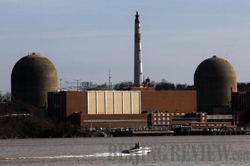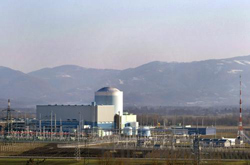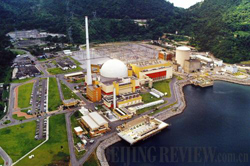|
 |
 |
|
A nuclear power plant in Landshut, Germany (XINHUA/AFP) |
Hunterston B nuclear power plant in the United Kingdom (CFP) |
 |
 |
|
Indian Point nuclear power plant near New York City, the United States (CFP) |
Krsko Nuclear Power Plant in Slovenia (XINHUA/AFP) |
Comparing standards
For now, Chinese experts are most concerned with the reasons behind the disaster at the Fukushima Daiichi nuclear power plant. Developing a clearer picture of the problem will allow China to develop preventative measures at its own nuclear power facilities.
Yu said design flaws were the chief culprit of the explosion at the Japanese nuclear power plant. Since Japan is frequently hit by earthquakes, the Fukushima designers did incorporate earthquake-resistant factors into the plant's blueprints. But the recent disaster was more than what Japanese planners had anticipated—damage from the 9.0-magnitude earthquake was minimal. It was the quake-caused tsunami that caused the external auxiliary cooling system to malfunction and eventually fail together.
Improving this technology wouldn't be too difficult and if tsunami factors were taken into consideration when designing the nuclear power plant, the auxiliary equipment of Fukushima Daiichi nuclear power plant wouldn't have failed, said Yu.
"The reactor core withstood the tests of the earthquake. The main problem was caused by underestimating the effects of a hit from a tsunami," said Pan.
Questions have also been raised about Fukushima plant's age and how this could have contributed to the nuclear disaster, but Yu thinks otherwise.
"The Fukushima Daiichi nuclear power plant was put into operation in 1971, but we cannot say it is serving beyond its operational lifespan. A more exact conclusion is that it is within the later or last period of its service," he said.
Nuclear power plants all over the world need to be upgraded and tested each year to ensure efficient power output and safety. "Japan is a big and strong country in terms of nuclear power, and the condition of Fukushima Daiichi nuclear power plant must have been confirmed by the supervising authority to be allowed to extend operation for 20 years," Yu said.
 |
 |
|
The Angra 1 and Angra 2 nuclear power stations in Brazil (XINHUA/AFP) |
Paks Nuclear Power Plant in Hungary (XINHUA) |
Comparatively, nuclear power plants in operation or under construction in China do not face the same problems as the Fukushima plant, Yu said.
In China, the threshold for nuclear power plant construction is higher than the world average; earthquake-resistant and flood-resistant standards are higher as well. Moreover, boiling water reactor technologies used by the Fukushima Daiichi plant aren't in use—Chinese nuclear power plants use pressurized water reactor technologies. And all completed nuclear power plants use technologies between the second and third generations with automatic cooling systems more advanced than the second generation technologies used in the Fukushima plant. Nuclear power plants under construction use third-generation technology, with better safety capabilities.
Pan said China's nuclear industry began in the 1960s and safety issues have always been a priority. The first provision related to industrial safety in China issued by the State Council is about nuclear radiation and China has established several administrations and institutions for radiation safety. After developing nuclear power, the country set up the National Nuclear Safety Administration.
| 